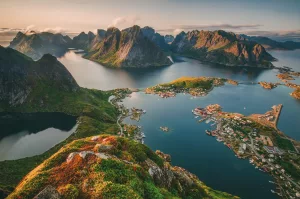Montana, known as the “Big Sky Country,” is a state brimming with natural beauty, rich history, and a unique way of life. From the rugged mountains of Glacier National Park to the expansive plains of the eastern prairie, Montana offers a diverse range of experiences for visitors and residents alike. Whether you’re planning a trip to Montana or simply looking to learn more about this enchanting state, understanding what makes it special is key to truly appreciating its charm. Here’s an expanded look into what you should know about Montana before visiting or moving to the state:
1. The Big Sky Country
Montana’s nickname, the “Big Sky Country,” reflects its vast open spaces and expansive views of the sky. The state is known for its dramatic sunsets, endless horizons, and clear blue skies that seem to stretch on forever. This is not just a nickname but a reality that influences the lifestyle and activities in Montana. If you’re a photographer or just someone who loves a good sunset, you’ll want to have your camera ready at all times. The best spots for sky watching include the plains of Eastern Montana and the high elevation points in the mountains where the view is unobstructed.
Practical Tip
While driving through Montana, make sure to pull over safely and enjoy these natural vistas. Carry a pair of binoculars for more detailed views of the wildlife and landscapes.
2. Glacier National Park
One of Montana’s most iconic landmarks, Glacier National Park, is a paradise for outdoor enthusiasts. With over a million acres of pristine wilderness, glacier-carved peaks, and crystal-clear lakes, the park offers endless opportunities for hiking, camping, and wildlife spotting. It’s a place where nature lovers can immerse themselves in the raw beauty of the Rocky Mountains.
Best Times to Visit
The park is most accessible from late June to mid-September when the Going-to-the-Sun Road is fully open. This is the best time for hiking and taking in the alpine views.
Tips for Visiting
- Plan Ahead: With limited lodging options, it’s crucial to book accommodations well in advance.
- Bear Safety: Always carry bear spray and know how to use it. Bears are active in the area, and it’s important to stay safe.
3. Yellowstone National Park
Although primarily located in Wyoming, Yellowstone National Park also extends into Montana. Home to geothermal wonders like Old Faithful and the Grand Prismatic Spring, Yellowstone is a must-visit destination for those interested in experiencing the power of nature up close. The Montana entrance is less crowded, offering a more serene way to explore the park.
Activity Highlights
- Geysers and Hot Springs: Witness the spectacle of geysers erupting and explore the vivid colors of hot springs.
- Wildlife Watching: Early morning or late evening are the best times to see bison, elk, and even wolves.
4. Rich Native American Culture
Montana is home to several Native American tribes, including the Blackfeet, Crow, and Salish peoples. Visitors to Montana can learn about the state’s rich indigenous heritage through cultural centers, museums, and events that celebrate Native American traditions.
Important Sites
- Museum of the Plains Indian: Located in Browning, this museum offers exhibits on the arts and cultures of the Northern Plains tribes.
- Powwows: Attending a powwow is an opportunity to experience the vibrant traditions and community spirit of Montana’s tribes.
5. Cowboy Country
Montana has a strong cowboy tradition, with ranching and rodeo culture playing a significant role in the state’s history. Visitors can experience the cowboy way of life by attending a rodeo, visiting a working ranch, or exploring cowboy museums.
Experience It First-Hand
- Visit a Dude Ranch: Many ranches offer guest stays where you can try horseback riding and cattle herding.
- Attend a Rodeo: The Livingston Roundup Rodeo and the Great Northern Rodeo are events that showcase the skills and traditions of Montana’s cowboy culture.
6. Lewis and Clark Expedition
In 1804, the Lewis and Clark Expedition embarked on a journey across the newly acquired Louisiana Territory, passing through present-day Montana. Visitors can retrace the expedition’s footsteps at various historic sites and museums throughout the state.
Must-See Sites
- Lewis and Clark National Historic Trail Interpretive Center: Located in Great Falls, this center provides insights into the expedition and interactive exhibits.
7. Big Wildlife
Montana is home to a diverse array of wildlife, including grizzly bears, wolves, elk, and bison. Wildlife enthusiasts can embark on safaris, guided tours, and wildlife watching excursions to observe these majestic creatures in their natural habitats.
Best Spots for Wildlife Watching
- Yellowstone National Park: Offers a chance to see a variety of animals in one location.
- The National Bison Range: Known for its bison herds and bird watching opportunities.
8. Fly Fishing Paradise
With its pristine rivers, lakes, and streams, Montana is a mecca for fly fishing enthusiasts. Anglers from around the world flock to Montana to test their skills against native trout species like cutthroat, rainbow, and brown trout.
Prime Fishing Locations
- Madison River: Known for its large trout and scenic beauty.
- Bighorn River: Offers excellent fishing conditions year-round.
9. Outdoor Adventure Capital
Whether it’s hiking in the mountains, skiing in the winter, or biking along scenic trails, Montana offers an abundance of outdoor activities for adventurers of all levels. From the Absaroka-Beartooth Wilderness to the Bob Marshall Wilderness, there’s no shortage of opportunities to explore the great outdoors.
Seasonal Activities
- Winter: Skiing at Big Sky Resort or snowshoeing in Glacier National Park.
- Summer: Hiking in the Bitterroot Mountains or rafting on the Flathead River.
10. National Bison Range
Established in 1908, the National Bison Range in Montana is dedicated to preserving and protecting American bison, the country’s national mammal. Visitors can drive through the range and witness these iconic animals roaming freely in their natural habitat.
Visiting Tips
- Best Time to Visit: Early morning or late afternoon when animals are most active.
- Visitor Center: Offers educational exhibits about the bison and the range’s ecosystem.
11. Historic Mining Towns
Montana has a rich history of mining, particularly during the late 19th and early 20th centuries. Towns like Butte and Virginia City offer a glimpse into Montana’s mining past, with preserved historic buildings, museums, and guided tours that showcase the state’s mining heritage.
Explore the History
- Butte: Known as the “Richest Hill on Earth,” Butte’s mining history is evident in its architecture and museums.
- Virginia City: Offers a step back in time with its well-preserved ghost town ambiance and historic reenactments.
12. Dark Sky Sanctuaries
Montana is home to several designated dark sky sanctuaries, where visitors can marvel at the beauty of the night sky without light pollution. Places like Glacier National Park and the Madison Valley offer unparalleled stargazing opportunities for astronomy enthusiasts.
Stargazing Tips
- Best Time: New moon nights are ideal for stargazing.
- Equipment: Bring a telescope or binoculars for a closer look at celestial bodies.
13. Western Art and Culture
Montana has a vibrant art and culture scene, with many artists drawing inspiration from the state’s natural beauty and Western heritage. Galleries, art festivals, and cultural events showcase a wide range of artistic expression, from traditional Western paintings to contemporary sculptures.
Notable Events
- C.M. Russell Museum: Located in Great Falls, this museum celebrates the works of Charles Russell, a renowned Western artist.
- Art Festivals: Events like the Sweet Pea Festival in Bozeman highlight local and national artists.
14. Huckleberry Capital
Huckleberries, a beloved local fruit, are a staple of Montana cuisine. Visitors can taste huckleberry jams, pies, and other treats at farmers’ markets, roadside stands, and local eateries throughout the state.
Culinary Delights
- Huckleberry Desserts: Enjoy a slice of huckleberry pie or a scoop of huckleberry ice cream.
- Seasonal Picking: Late summer is the best time to find fresh huckleberries in the wild.
15. Continental Divide
Montana is home to the Continental Divide, a geological feature that separates the watersheds of North America. Visitors can stand on the divide and see water flow to either the Pacific Ocean or the Atlantic Ocean, making it a unique and significant landmark in the state.
Explore the Divide
- Hiking Trails: The Continental Divide Trail offers hiking opportunities for those looking to explore this natural boundary.
- Scenic Drives: Several roads cross the divide, providing breathtaking views and photo opportunities.
16. Friendly Locals
One of the defining characteristics of Montana is the warmth and friendliness of its residents. Visitors to the state often remark on the hospitality and welcoming nature of Montanans, making it a truly inviting destination for travelers from near and far.
Making Connections
- Community Events: Participating in local festivals and events is a great way to meet and interact with residents.
- Volunteer Opportunities: Engaging in community service projects can offer deeper insights into the local culture and values.
17. Small Town Charm
Beyond the well-known cities like Missoula and Bozeman, Montana is dotted with small towns that offer a unique glimpse into the state’s laid-back lifestyle. Towns like Whitefish, with its quaint downtown and proximity to Glacier National Park, and Red Lodge, a gateway to the Beartooth Highway, are perfect for those who enjoy exploring off the beaten path.
Discover Hidden Gems
- Local Shops and Cafes: Each town boasts its own unique shops and eateries that reflect the local flavor.
- Festivities: Many small towns host annual events and festivals that showcase their heritage and community spirit.
18. Seasonal Weather
Montana’s weather can vary greatly depending on the season and region. Winters are typically cold and snowy, especially in the mountains, while summers are warm and dry, making it ideal for outdoor activities.
Weather Preparation
- Packing Tips: Layering is key. Pack warm clothing for winter and breathable fabrics for summer.
- Weather Apps: Use local weather apps to stay updated on current conditions, especially if engaging in outdoor activities.
19. Agricultural Heritage
Montana’s agricultural roots run deep, with wheat, barley, and cattle ranching playing significant roles in its economy. The state’s rural areas offer a chance to learn about the agricultural lifestyle and its impact on local communities.
Farm Tours and Experiences
- Farmers’ Markets: Visit local markets to sample fresh produce and artisanal goods.
- Ranch Visits: Some working ranches offer tours where visitors can learn about cattle raising and crop production.
20. Unique Geological Features
Montana’s landscape is dotted with unique geological features that tell the story of the earth’s history. From the limestone caves of Lewis and Clark Caverns to the striking columns of the Devil’s Tower, there’s much to explore for geology enthusiasts.
Must-Visit Locations
- Lewis and Clark Caverns: Offers guided tours through stunning limestone caves.
- Makoshika State Park: Known for its badlands and dinosaur fossils.
Exploring Montana provides an opportunity to connect with nature, learn about diverse cultures, and experience a way of life that’s both rugged and welcoming. Whether you’re planning a short visit or considering making Montana your home, there’s always something new to discover in the Big Sky Country.



